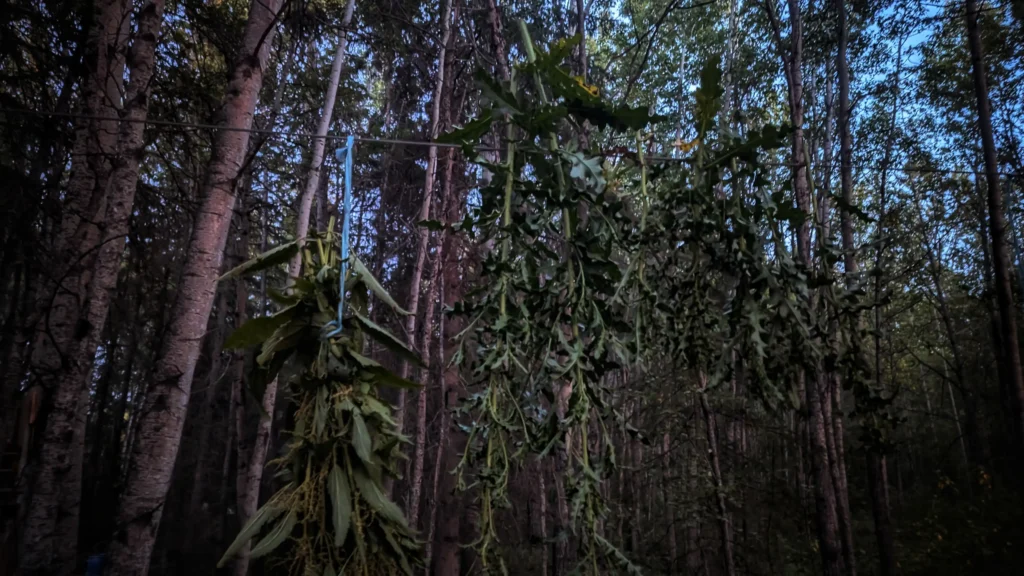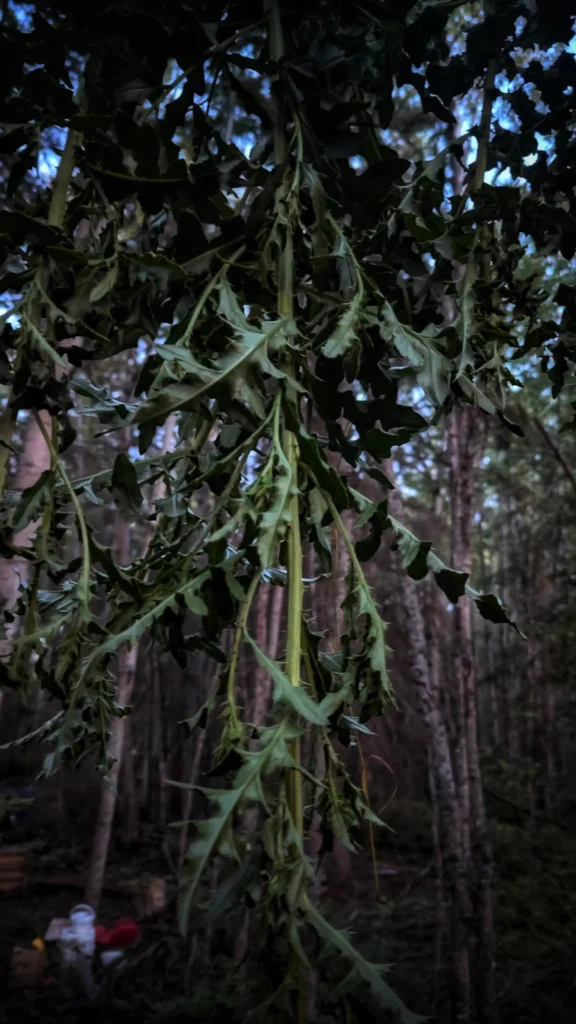🌾 Canadian Thistle: Misunderstood Medicine of the Meadow
Most folks see Canadian thistle and reach straight for the shovel—or the spray bottle. Known for its prickly leaves and tenacious roots, this resilient plant is often labeled an invasive nuisance. But like many so-called weeds, Canadian thistle holds a hidden wealth of value for those willing to look a little closer.
Here at WoodFrog Hollow, we like to say: What the land offers is often what we need most. And Canadian thistle is no exception.

🌿 What Is Canadian Thistle?
Canadian thistle (Cirsium arvense) is a perennial plant native to Europe and Asia but now widely naturalized across North America. It spreads both by seeds and creeping root systems, making it hard to control—but also incredibly persistent, hardy, and generous in what it offers.
Despite its reputation, thistle is edible, medicinal, and beneficial to pollinators and soil health when managed thoughtfully.
🌼 Benefits & Uses of Canadian Thistle
🐝 1. Pollinator Powerhouse
Canadian thistle flowers are rich in nectar and attract bees, butterflies, and other beneficial insects. In areas where blooms are scarce, thistle can be a vital food source for pollinators—especially in mid-to-late summer.
🌱 2. Soil Restoration
Thistle is a pioneer species—it shows up first in disturbed or compacted soil. Its deep taproots help break up hardpan and bring nutrients like calcium and potassium up to the surface, slowly improving the quality of the soil for future plant growth.
Think of it like nature’s tiller—doing the hard work underground where we can’t see it.
🫖 3. Edible & Medicinal Parts
Canadian thistle may not be a feast food, but it has humble herbal value:
- Young shoots and leaves (before they toughen) can be peeled, steamed, or sautéed like asparagus.
- Roots, harvested in fall or early spring, offer cleansing and tonic effects, especially for the liver and kidneys.
- Leaves and flowers can be steeped into a simple herbal tea for mineral support and digestion.

🍵 Thistle Tea Recipe
A simple wild brew for daily support
Ingredients:
- 1–2 tsp dried thistle leaves and/or flowers (young leaves work best)
- 1 cup freshly boiled water
Instructions:
- Place the dried leaves and flowers in a tea infuser or loose in a mug.
- Pour hot water over and cover to steep for 10–15 minutes.
- Strain if needed, and sip slowly.
Benefits: Supports digestion, helps ease mild bloating or gas, and may offer gentle liver support over time.
🌿 Thistle Root Decoction
A deeper brew for detox, especially in spring or fall
Ingredients:
- 1 tbsp dried or 2 tbsp fresh cleaned and chopped thistle root
- 2 cups cold water
Instructions:
- Place roots and water in a small pot.
- Bring to a gentle simmer, then cover and reduce heat to low.
- Simmer for 20–30 minutes.
- Strain and store in the fridge for up to 3 days.
Dosage: Drink ½ cup up to twice daily, preferably between meals.
Benefits: Traditionally used to support kidney and liver function, especially after long winters or times of sluggish digestion.
⚠️ Note: Always test small amounts first, especially if you’re new to wild herbs or on any medications.
🚜 How to Work With It, Not Against It
Canadian thistle will grow where the soil invites it. Instead of waging war on it, try observing what it’s telling you:
- Is the soil compacted, acidic, or disturbed?
- Are other beneficial plants struggling in the same area?
Use it as a signal species—a sign that healing needs to happen underground. Once the soil is amended and healthy plant competition is introduced, thistle will often recede on its own.
🌾 Final Thoughts
Canadian thistle might not win any beauty contests in the garden, but it’s a quiet teacher. It reminds us to slow down, look deeper, and recognize value where others only see inconvenience. With some gloves, a bit of curiosity, and a willingness to work with the land instead of against it, even thistle can become an ally.
“For every beast of the forest is Mine, and the cattle upon a thousand hills.” – Psalm 50:10
(And perhaps even the thistle, too.)
Have you worked with thistle before? Do you let it grow in your meadows, or do you pull it up right away? Let us know in the comments below—your experience helps others learn!
